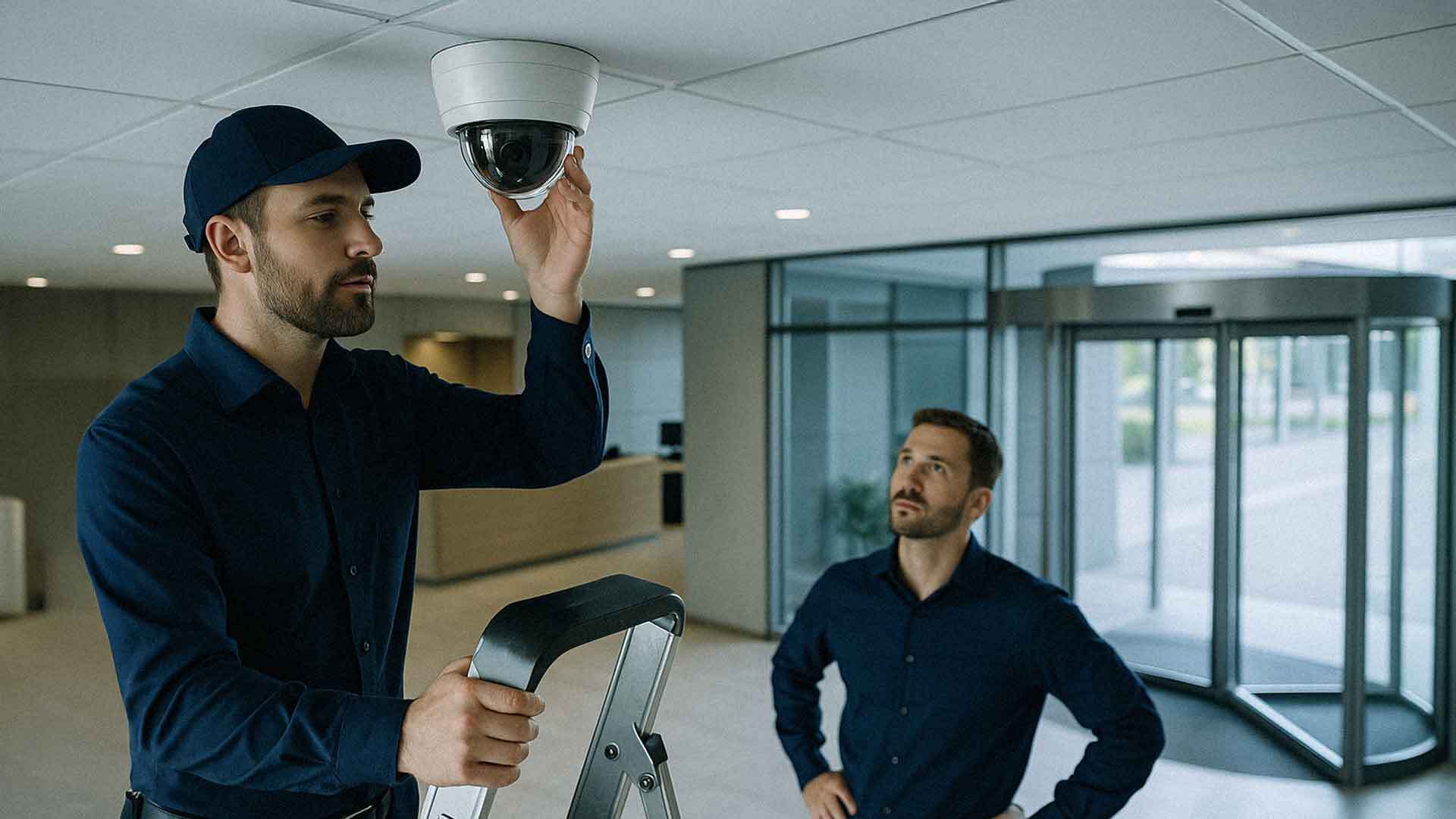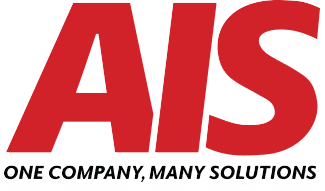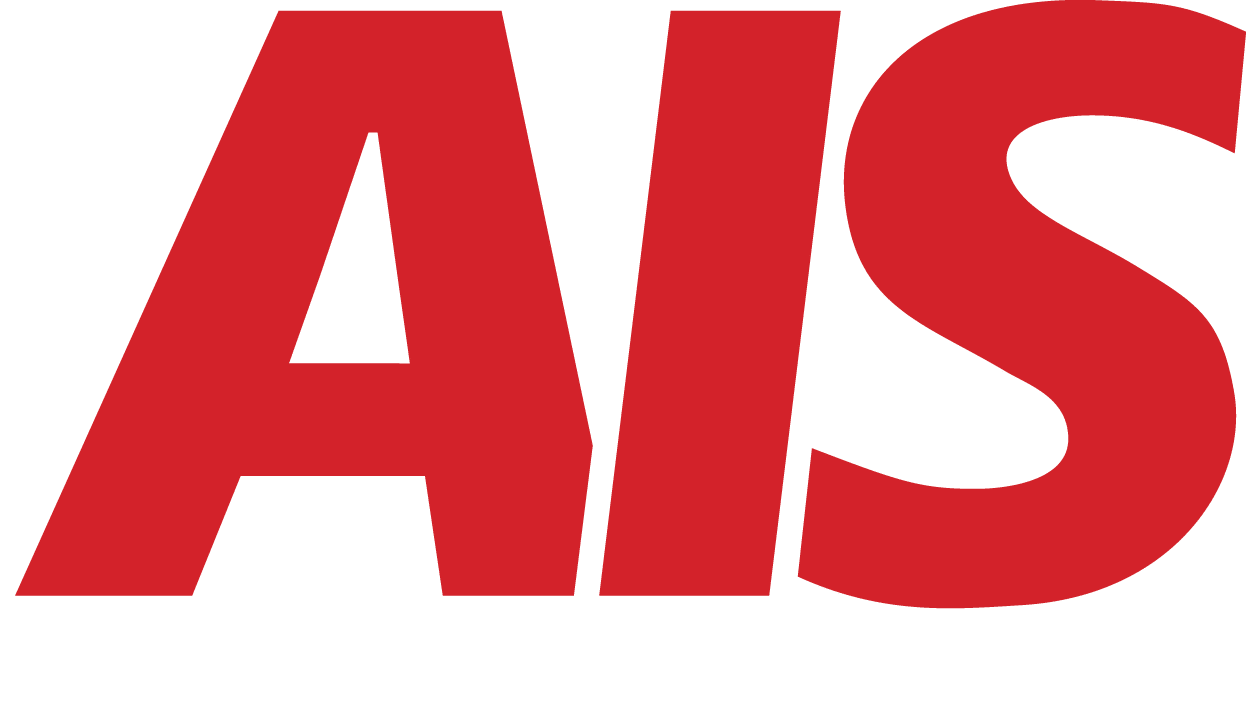Best Practices for Camera Placement in Offices, Warehouses, and Retail
October 20th, 2025 | 6 min. read

Security cameras do more than record video. They protect people, assets, and data while helping prevent theft, accidents, and unauthorized access. But even the most advanced camera system fails when installed incorrectly.
Poor placement can create blind spots, capture unusable footage, or violate privacy laws. On the other hand, strategic placement helps businesses improve safety, accountability, and operational awareness.
Whether you manage an office, warehouse, or retail space, the right camera setup is critical for both security and efficiency.
Camera Placement in Office Environments
Office settings require a balance between visibility and privacy. Employees and visitors must feel safe without feeling constantly watched.
Key Areas to Cover
- Entrances and Exits: Capture everyone entering or leaving the building. Position cameras above doors, facing inward to catch clear facial images.
- Reception Areas: Record visitor interactions, deliveries, and foot traffic.
- Hallways and Stairwells: Cover main movement paths while maintaining employee privacy.
- Server Rooms and IT Closets: Restrict access and monitor sensitive infrastructure.
- Parking Lots and Entry Gates: Protect vehicles and outdoor assets.
Placement Best Practices
- Mount cameras at least 8 to 10 feet high to prevent tampering.
- Avoid aiming cameras directly at windows or bright light sources.
- Overlap coverage slightly between cameras to eliminate blind spots.
- Use wide-angle lenses for open spaces, and narrow lenses for entrances or hallways.
- Label camera feeds clearly to simplify monitoring and playback.
Privacy Considerations
Never install cameras in restrooms, break rooms, or other private spaces. Inform employees that cameras are used for safety and compliance, not surveillance of personal behavior.
Posting visible “CCTV in Use” signs can also reduce liability and deter theft or misconduct.
Camera Placement in Warehouses
Warehouses pose unique challenges for security camera installation. The environment is large, dynamic, and filled with obstacles like shelves, forklifts, and equipment.
Key Areas to Cover
- Loading Docks: Monitor shipments, deliveries, and driver activity.
- Inventory Aisles: Capture product movement and deter internal theft.
- Receiving and Packaging Zones: Verify accuracy and process compliance.
- Perimeter Fencing: Watch for unauthorized access or trespassing.
- Equipment Storage: Protect valuable tools and assets.
Placement Best Practices
- Mount cameras at 12 to 16 feet to provide a clear overhead view of aisles.
- Position cameras diagonally across corners to maximize coverage per device.
- Use pan-tilt-zoom (PTZ) cameras in large open areas for flexible monitoring.
- Install infrared (IR) or low-light cameras in darker storage areas.
- Avoid placing cameras too close to HVAC vents or fluorescent lights to reduce glare and heat exposure.
Operational Benefits
Well-placed cameras not only deter theft but also improve safety and logistics. Managers can monitor forklift routes, verify deliveries, and review accidents. Video analytics can even track productivity and workflow efficiency.
Camera Placement in Retail Stores
Retail spaces combine public access, merchandise exposure, and customer interaction, making them some of the highest-risk environments for theft and liability claims.
Key Areas to Cover
- Entrances and Exits: Record every visitor entering or leaving the store.
- Point of Sale (POS) Registers: Monitor transactions, refunds, and potential fraud.
- High-Value Product Displays: Deter shoplifting in jewelry, electronics, or cosmetics sections.
- Aisles and Corners: Eliminate blind spots and ensure full coverage of the floor plan.
- Stock Rooms: Protect backroom inventory and employee-only areas.
- Parking Areas: Extend security coverage to customer and employee vehicles.
Placement Best Practices
- Position cameras at an angle that captures faces without pointing directly into customers’ eyes.
- Use dome cameras near entrances to provide wide-angle coverage.
- Mount cameras 9 to 12 feet high for clear resolution without obstruction.
- Avoid clutter or ceiling fixtures that may block the camera’s field of view.
- Test camera placement during high-traffic times to ensure footage remains usable even when aisles are crowded.
Customer Privacy and Compliance
While recording in public retail areas is legal, capturing sound without consent can violate local privacy laws. Always check state regulations and disable audio recording unless authorized.
Visible cameras also act as a deterrent. Customers and employees behave more responsibly when they know security measures are active.
Technical Considerations for All Environments
Resolution and Lens Selection
For business use, aim for cameras with at least 1080p HD resolution. Wide-angle lenses work best for open areas, while varifocal lenses let you adjust zoom and focus for smaller zones.
Lighting and Exposure
Lighting has a major impact on image clarity. Position cameras to take advantage of consistent light sources and avoid glare from windows or reflective surfaces. In areas with variable lighting, choose wide dynamic range (WDR) cameras.
Network and Storage Planning
Modern IP cameras connect directly to your network. To maintain performance:
- Use Cat6 Ethernet cabling for faster speeds.
- Segment surveillance traffic on a separate VLAN.
- Ensure your network video recorder (NVR) has adequate storage capacity. A standard setup with 16 cameras recording at 1080p may require several terabytes of storage for 30-day retention.
Redundancy and Remote Access
If possible, store footage both locally and in the cloud. This redundancy ensures evidence remains available even if local hardware fails or is stolen.
Enable secure remote access only through encrypted connections like VPNs or authenticated mobile apps.
Common Camera Placement Mistakes to Avoid
Even with advanced systems, poor planning can ruin your security coverage. Avoid these common errors:
- Mounting too high: Cameras lose detail and fail to capture faces.
- Aiming toward light sources: Glare and exposure imbalance make footage unusable.
- Overlooking corners and blind spots: Leaves areas vulnerable.
- Ignoring cable management: Loose or exposed cables can be damaged easily.
- Failing to test angles: Always review footage before final installation.
Each camera should serve a specific purpose. A “more is better” approach often leads to overlap and unnecessary cost.
The Role of Managed Security Services
Managing surveillance systems takes time, expertise, and regular maintenance. A Managed Security Provider (MSP) like AIS can help businesses design, install, and maintain their camera networks for maximum reliability.
Benefits include:
- Professional site surveys and camera layout planning
- Installation by certified technicians
- Centralized management and remote monitoring
- Regular health checks and firmware updates
- Integration with access control systems and alarm notifications
8. Next Steps: Schedule a Security Assessment
Camera placement isn’t a guess—it’s a plan. A professional assessment ensures your system delivers full coverage without wasted equipment or legal risk.
AIS provides comprehensive security assessments for offices, warehouses, and retail businesses. Our team evaluates your site, identifies blind spots, and recommends an optimized camera layout backed by network and storage infrastructure planning.
Protect your people, property, and peace of mind with a system designed to perform when it matters most.
A true southerner from Atlanta, Georgia, Marissa has always had a strong passion for writing and storytelling. She moved out west in 2018 where she became an expert on all things business technology-related as the Content Producer at AIS. Coupled with her knowledge of SEO best practices, she's been integral in catapulting AIS to the digital forefront of the industry. In her free time, she enjoys sipping wine and hanging out with her rescue-dog, WIllow. Basically, she loves wine and dogs, but not whiny dogs.



